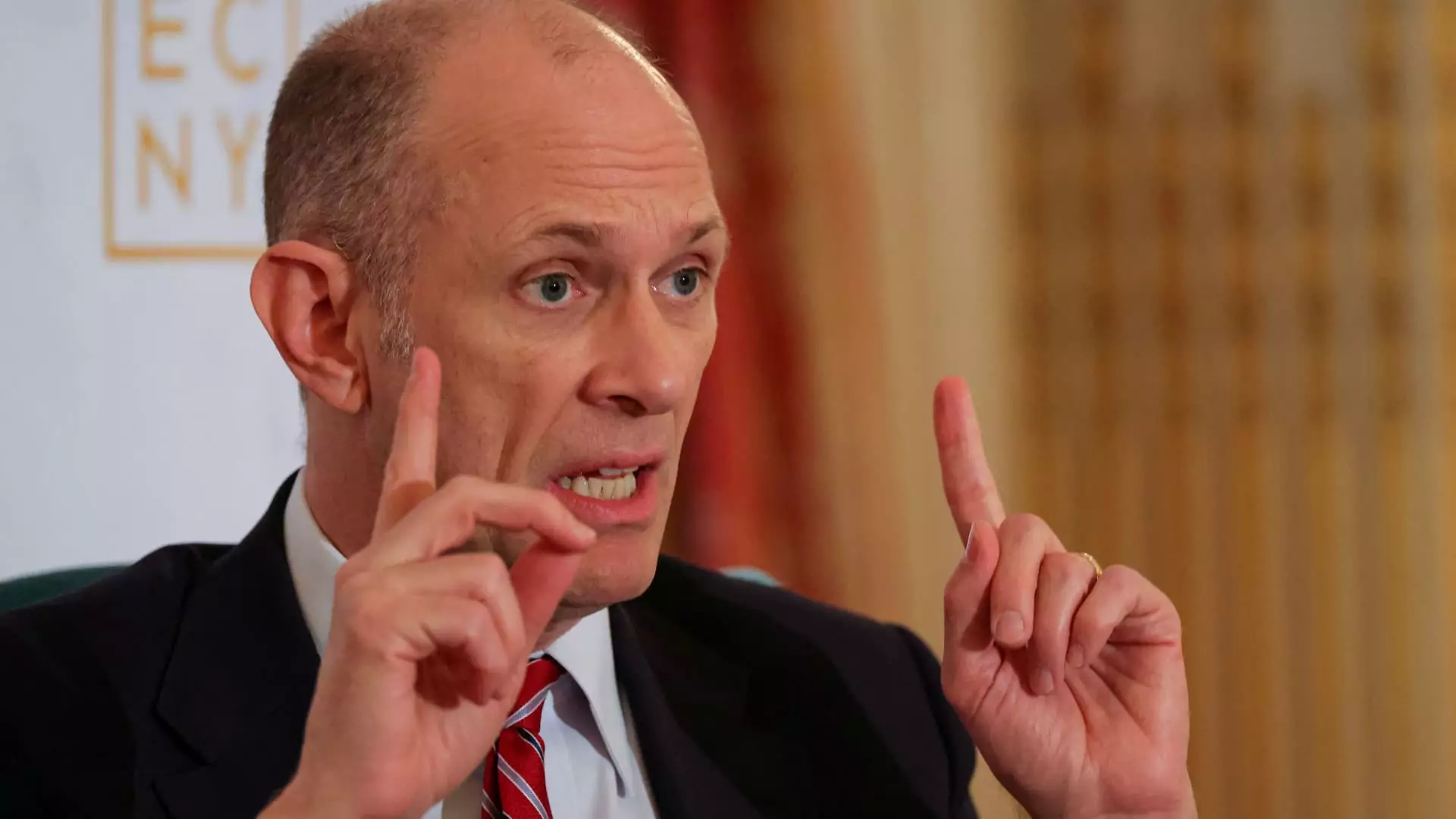In the turbulent waters of U.S. economic policy, trade tensions have become a primary source of uncertainty, with President Donald Trump’s recent tariff threats sending shockwaves through financial markets. The Chicago Federal Reserve President Austan Goolsbee’s remarks highlight the precarious balance central bankers must maintain when it comes to navigating the political whims of trade policy. On numerous occasions, it has been demonstrated that the economy responds not just to actual policy changes, but also to the mere speculation surrounding potential alterations. Trump’s announcement of significant tariffs on products from the European Union, as well as a 25% tariff on some Apple products, exemplifies such speculative turbulence, leaving central banks to grapple with the consequences.
In an era where the markets largely rely on stability and predictability, Trump’s erratic trade approach appears more like a high-stakes gamble than a coherent policy strategy. While tariffs may seem attractive as a tool for protecting domestic industries, they can easily spiral into a tit-for-tat scenario that disrupts supply chains and increases costs for consumers. The financial markets react with unease, leading to sharp fluctuations in bond yields, as investors recalibrate their expectations in light of unstable fiscal policy. Tariffs, instead of being a policy panacea, may well become a hallmark of economic stagnation—a dangerous precedent with long-lasting implications.
Stagflation Risk
Austan Goolsbee’s assessment of the potential stagflationary effects of tariffs is particularly sobering. Stagflation, characterized by stagnant economic growth accompanied by high inflation, poses a dire threat to the economic landscape. As someone who leans towards center-right liberalism, I vehemently oppose the notion of using tariffs as a go-to measure for resolving trade disputes. Tariffs can have dire consequences that outweigh the perceived short-term benefits. The scenario Goolsbee describes, where inflation rears its head just as growth falters, should send chills down the spine of policymakers and economists alike.
When tariffs are imposed, the immediate outcome often includes rising prices on consumer goods. If inflation becomes rampant, it could force the Federal Reserve into an untenable position, as raising interest rates could choke off what little growth remains within the economy. This cyclical trap makes it hard for both consumers and businesses to breathe, and places a disproportionate burden on working-class families struggling to adapt to ever-increasing living costs.
Central Bank Independence Under Siege
The complexities of trade policy are exacerbated by the potential erosion of central bank independence, a fundamental principle that maintains the objective of unbiased monetary policy. Central bankers, like Goolsbee, find themselves tethered to the unpredictable maneuvers of political leaders, which compromises their ability to make informed decisions based on data-driven analyses. While the Federal Reserve has tools at its disposal to combat economic downturns, it finds itself constrained in maneuvering amidst a chaotic atmosphere shaped by ongoing trade conflicts.
Goolsbee’s take on the heightened bar for rate actions during such uncertain times is a stark reminder that the intertwined nature of politics and economics can lead to disastrous repercussions. Instead of a measured response aimed at fostering long-term growth, we risk being caught in a vicious cycle of frequent adjustments that aim to appease short-term political agendas rather than holistic economic stability.
Hope Amidst Uncertainty
Despite this sobering backdrop, Goolsbee expresses a level of optimism for the future—highlighting the possibility of a return to solid economic growth. Yet, one has to question how realistic such optimism is in an environment driven by sudden tariff threats and inconsistent policy announcements. The gravity of potential disruptions suggests that relying solely on hope might not be enough. At a time when consumers remain hesitant in their spending, businesses may become reluctant to invest, further exacerbating the economic climate.
Central banks must take a long view, considering not merely the immediate impacts of tariffs but their longer-term ramifications. Adjusting rates based on shifting political landscapes can lead to uncertainty and indecision. Goolsbee acknowledges that the bar is set higher for any immediate actions—a prudent approach—but it must not overshadow the reality of the economic storm clouds gathering on the horizon.
If we want the economy to thrive, it becomes critical to pursue trade policies that prioritize stability and collaboration over tactics rooted in conflict and protectionism. In a globalized market, success is no longer a matter of choosing isolation but rather of navigating partnerships. It’s imperative that we recognize the risks associated with the ongoing tariff drama and advocate for an approach that fosters growth and unity rather than division.

